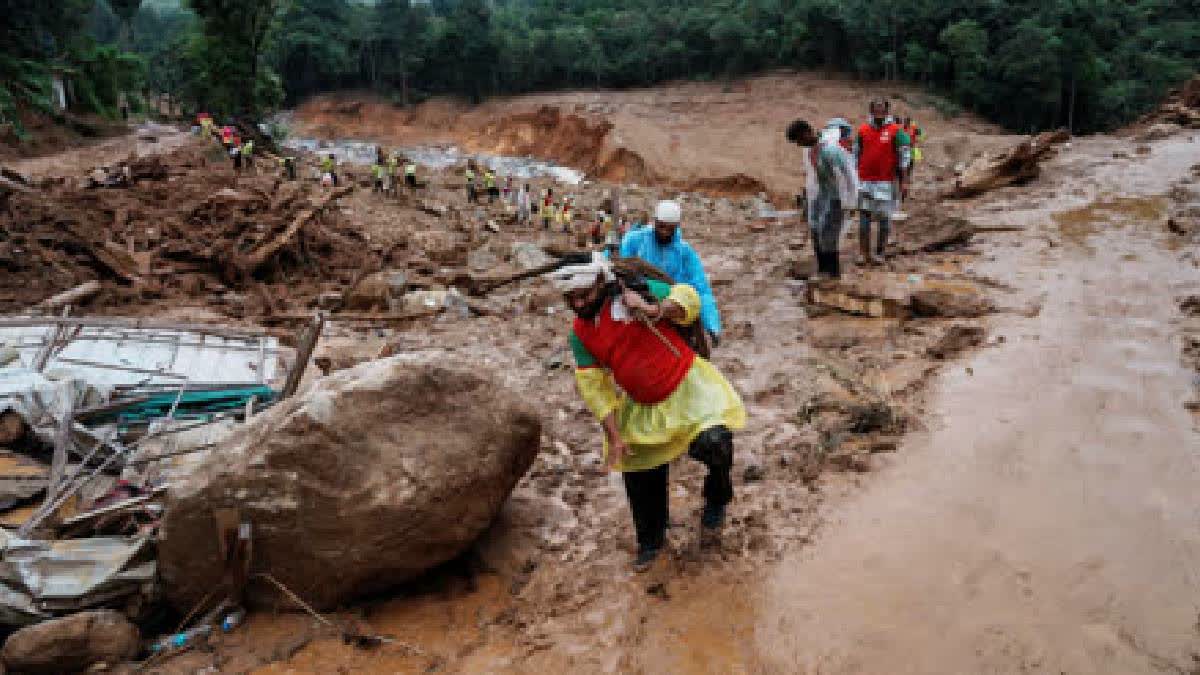New Delhi: The increase in climate change-driven rainfall is likely to increase the potential number of landslides that could be triggered in the future, stated a study conducted by the World Weather Attribution (WWA) on the recent Wayanad landslide that killed more than 231 people.
The landslides in Wayanad resulted in devastating loss of life and occurred in a mountainous region with loose, erodible soils after 140mm of precipitation fell on saturated soils, it said.
“In today’s climate, which is 1.3°C warmer than it would have been at the beginning of the industrial period, an event of this magnitude is expected to occur about once every 50 years. The event is the third heaviest one-day rainfall event on record, with heavier spells in 2019 and in 1924, and surpasses the very heavy rainfall in 2018 that affected large regions of Kerala,” the findings of WWA’s study revealed.
The WWA is an international collaboration that analyses and communicates the possible influence of climate change on extreme weather events, such as storms, extreme rainfall, heatwaves, and droughts.
It stated that to assess if human-induced climate change influenced the heavy rainfall, “we first determine if there is a trend in the observations. Heavy one-day rainfall events have become about 17% more intense in the last 45 years, over a period when the climate has warmed by 0.85°C. Longer-term trends in the pre-satellite era are not clear, which may relate to lower quality weather data.”
To quantify the role of human-induced climate change, the study analysed climate models with high enough resolution to capture precipitation over the relatively small study region. “Overall, the available climate models indicate a 10% increase in intensity. Under a future warming scenario where the global temperature is 2°C higher than pre-industrial levels, climate models predict even heavier one-day rainfall events, with a further expected increase of about 4% in rainfall intensity,” it said.
The WWA findings said that given the small mountainous region with complex rainfall-climate dynamics, there is a high level of uncertainty in the model results. “However, the increase in heavy one-day rainfall events is in line with a large and growing body of scientific evidence on extreme rainfall in a warming world, including in India, and the physical understanding that a warmer atmosphere can hold more moisture, leading to heavier downpours,” it said.
